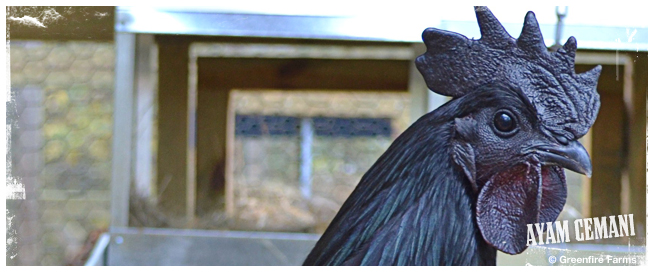The most unique chicken on the planet! Revered for its striking, all-black appearance, this Indonesian chicken is known for its black feathers, black skin, black comb, black flesh, black organs, and black bones!
| Item | 1+ | Quantity |
|---|---|---|
| Ayam Cemani Day-Old Chick Unsexed | 69.00 | |
| Ayam Cemani Eggs | 15.00 | Sold Out |
| Ayam Cemani (2023 Import) Hatching Egg In stock: 4 | 20.00 | |
| Ayam Cemani Day-Old Chick (New Bloodline 2023 Import) Unsexed | 99.00 |
Come to the Dark Side.
Breed History
The Indonesian chicken breed known as Ayam Cemani takes ‘dark’ into an entirely different realm. Their feathers are black. Their skin is black. Cut open an Ayam Cemani and you’ll find black muscle anchored to black bones. Even their organs are black. And what do you get for all this unrelenting blackness? One of the most beautiful chickens in the world; a chicken so spectacular and exotic that it is referred to as the “Lamborghini of poultry.”
In Asia, Ayam Cemani are renowned as much for the mystical powers of their black meat as they are for their extraordinary ink-black feathers that shimmer with a metallic sheen of beetle green and purple. The reason for these excessive black traits is a result of a fibromelanistic gene. This gene is not very common and is only seen in a few other chicken breeds. The fibromelanistic gene causes black pigment or melanin to build up in the skin and connective tissues.
The Ayam Cemani are believed to originate from Sumatra, Indonesia. They were reportedly first imported to Europe in the late 1990s. Greenfire Farms was able to locate and legally import into the United States the first pure specimens of this breed in 2014. We were also fortunate enough to recently import a new line of Ayam Cemani in 2023 directly from Belgium. These will be sold separately from the previous line. This line has much less mulberry. We hope this will help add more genetic diversity to our Cemani flock as well as yours.
Appearance and Behavior
Despite their hypnotic otherworldly beauty Ayam Cemani are usually hardy and low maintenance. They tolerate the heat well and are also relatively cold-hardy. It is important to note that the Ayam Cemani tend to be flighty and if they are spooked, you will know it! They normally all fly up and scatter at the sound of the rooster's alarm.
The roosters normally weigh around 5 to 7 pounds at maturity and the hens are normally about 4 to 5 pounds at maturity. They are a medium-sized fowl. The hens will lay about 60 to 100 small to medium, cream-colored eggs in their first year. Their laying pattern is very different than most other breeds. Normally they start and stop laying throughout the spring and summer. Some sources we've read claim that they will lay 20 to 30 eggs and then stop laying for 6 months. We haven't noticed that much of a gap between when they stop laying and start again but it is important to consider this when deciding to add these birds to your flock.
The hens tend to be very vocal when selecting their nestbox for the day and they are notoriously broody. There are some hens here that we've noticed that are broody for quite a while during the spring and summer.
To view the standard of perfection for this breed, click here: https://ayamcemani.us/how-to-breed-your-ayam-cemani/
Notes
We were asked by New York magazine to supply an Ayam Cemani model for their holiday gifts issue, and after we flew him to New York our rooster patiently allowed himself to be draped with million-dollar jewelry and trussed with a red ribbon while he was photographed under bright lights. (You can see his magazine picture below.) He was unbothered by all the attention, and he soon jetted back to Florida for a happy reunion with his flock of hens. Ah, the life of a supermodel.
The birds pictured here are our breeding stock, and they were selected from many birds for their exceptionally black features. However, we cannot guarantee the distribution of black pigment in their offspring.
Please, don't be fooled. This breed does NOT lay black eggs. This is a common misconception about the breed.
Hatching Eggs
We incubate at 99.5F and 55% humidity. We normally see about 70% hatch on day 21 from the eggs that have been placed into our hatcher. Typically the eggs that don't hatch on day 21, won't hatch. We do keep the eggs one extra day just in case but very rarely have any hatched late. When hatching eggs from this breed, you should thoroughly check each chick for a black tongue, black toes and nails, and black or dark gray fluff. We have noticed that the toe pads and/or nails can sometimes darken over the first few weeks.
Breed Defects
We have noticed that some of the birds produced from our breeding flock will develop silver feathers in their hackles. Birds with this defect should be culled and not used in a future breeding program. We are continuing to work on this in hopes we can eliminate it but you will need to be very selective as well.
The merits of every bird should be assessed as they reach adulthood.
Breed History
The Indonesian chicken breed known as Ayam Cemani takes ‘dark’ into an entirely different realm. Their feathers are black. Their skin is black. Cut open an Ayam Cemani and you’ll find black muscle anchored to black bones. Even their organs are black. And what do you get for all this unrelenting blackness? One of the most beautiful chickens in the world; a chicken so spectacular and exotic that it is referred to as the “Lamborghini of poultry.”
In Asia, Ayam Cemani are renowned as much for the mystical powers of their black meat as they are for their extraordinary ink-black feathers that shimmer with a metallic sheen of beetle green and purple. The reason for these excessive black traits is a result of a fibromelanistic gene. This gene is not very common and is only seen in a few other chicken breeds. The fibromelanistic gene causes black pigment or melanin to build up in the skin and connective tissues.
The Ayam Cemani are believed to originate from Sumatra, Indonesia. They were reportedly first imported to Europe in the late 1990s. Greenfire Farms was able to locate and legally import into the United States the first pure specimens of this breed in 2014. We were also fortunate enough to recently import a new line of Ayam Cemani in 2023 directly from Belgium. These will be sold separately from the previous line. This line has much less mulberry. We hope this will help add more genetic diversity to our Cemani flock as well as yours.
Appearance and Behavior
Despite their hypnotic otherworldly beauty Ayam Cemani are usually hardy and low maintenance. They tolerate the heat well and are also relatively cold-hardy. It is important to note that the Ayam Cemani tend to be flighty and if they are spooked, you will know it! They normally all fly up and scatter at the sound of the rooster's alarm.
The roosters normally weigh around 5 to 7 pounds at maturity and the hens are normally about 4 to 5 pounds at maturity. They are a medium-sized fowl. The hens will lay about 60 to 100 small to medium, cream-colored eggs in their first year. Their laying pattern is very different than most other breeds. Normally they start and stop laying throughout the spring and summer. Some sources we've read claim that they will lay 20 to 30 eggs and then stop laying for 6 months. We haven't noticed that much of a gap between when they stop laying and start again but it is important to consider this when deciding to add these birds to your flock.
The hens tend to be very vocal when selecting their nestbox for the day and they are notoriously broody. There are some hens here that we've noticed that are broody for quite a while during the spring and summer.
To view the standard of perfection for this breed, click here: https://ayamcemani.us/how-to-breed-your-ayam-cemani/
Notes
We were asked by New York magazine to supply an Ayam Cemani model for their holiday gifts issue, and after we flew him to New York our rooster patiently allowed himself to be draped with million-dollar jewelry and trussed with a red ribbon while he was photographed under bright lights. (You can see his magazine picture below.) He was unbothered by all the attention, and he soon jetted back to Florida for a happy reunion with his flock of hens. Ah, the life of a supermodel.
The birds pictured here are our breeding stock, and they were selected from many birds for their exceptionally black features. However, we cannot guarantee the distribution of black pigment in their offspring.
Please, don't be fooled. This breed does NOT lay black eggs. This is a common misconception about the breed.
Hatching Eggs
We incubate at 99.5F and 55% humidity. We normally see about 70% hatch on day 21 from the eggs that have been placed into our hatcher. Typically the eggs that don't hatch on day 21, won't hatch. We do keep the eggs one extra day just in case but very rarely have any hatched late. When hatching eggs from this breed, you should thoroughly check each chick for a black tongue, black toes and nails, and black or dark gray fluff. We have noticed that the toe pads and/or nails can sometimes darken over the first few weeks.
Breed Defects
We have noticed that some of the birds produced from our breeding flock will develop silver feathers in their hackles. Birds with this defect should be culled and not used in a future breeding program. We are continuing to work on this in hopes we can eliminate it but you will need to be very selective as well.
The merits of every bird should be assessed as they reach adulthood.
| Egg Color | tinted |
| Egg Size | Small to Medium |
| Average number of eggs per year | 100 - 120 |
| Gamefowl | no |
| Country of Origin | Indonesia |
| Cold tolerant | no |
| Year of import(s) | 2014, 2015 |
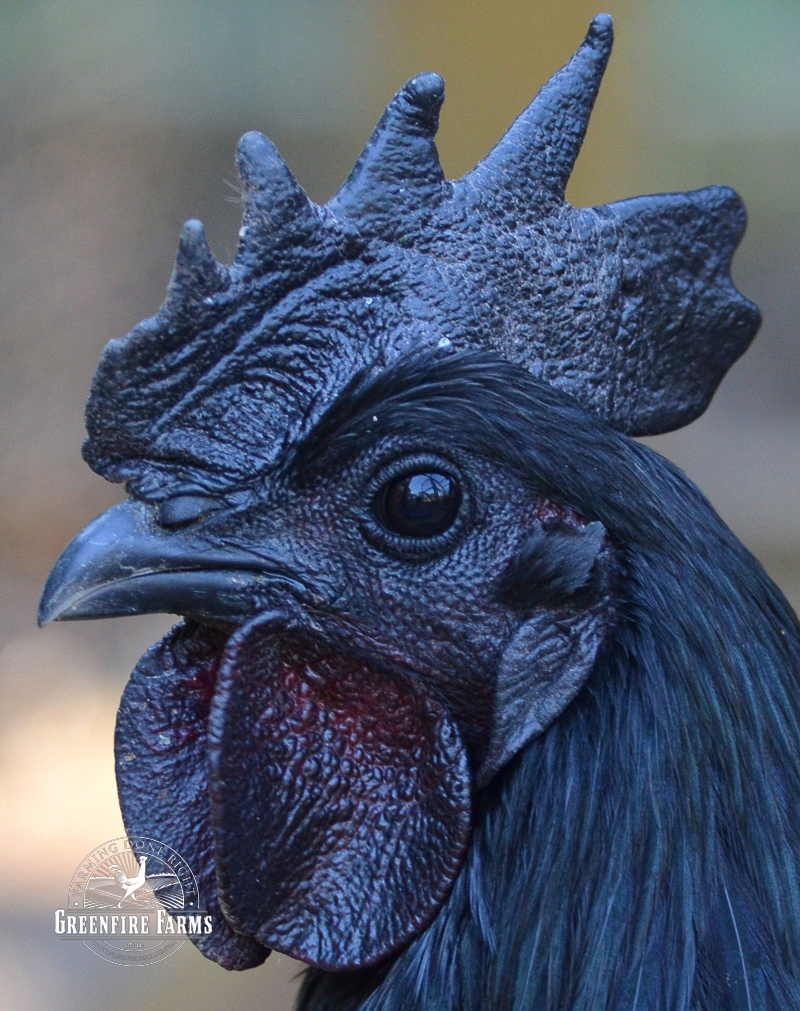


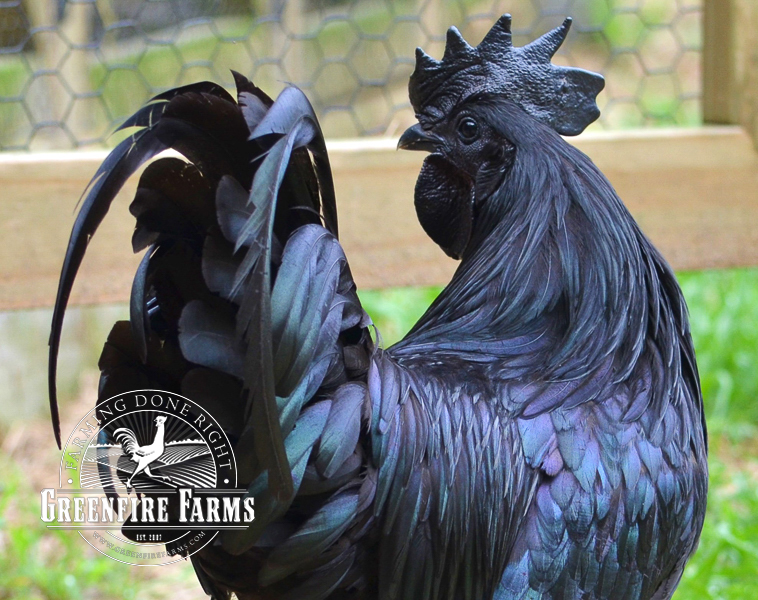
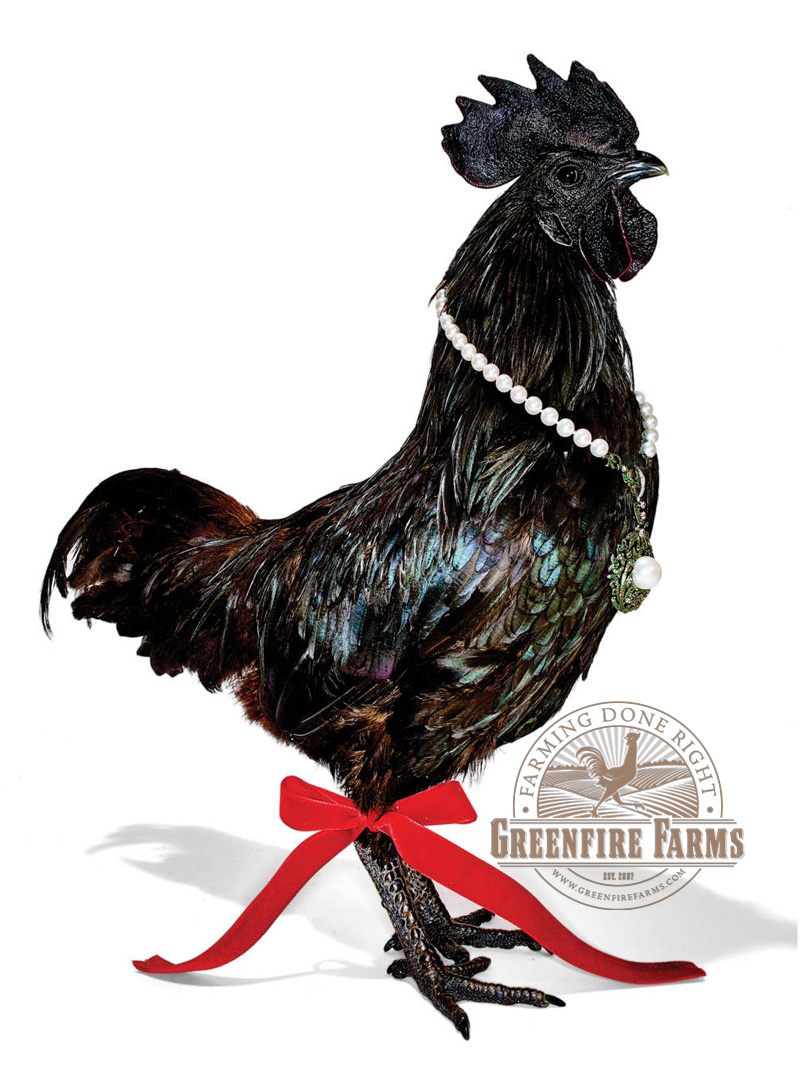
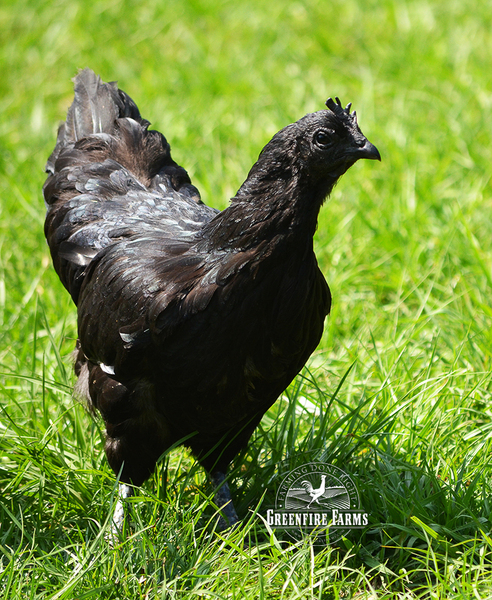
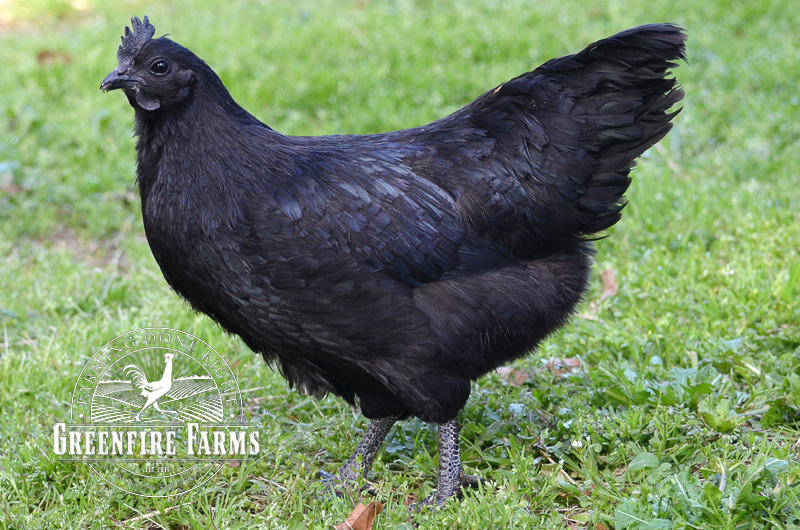
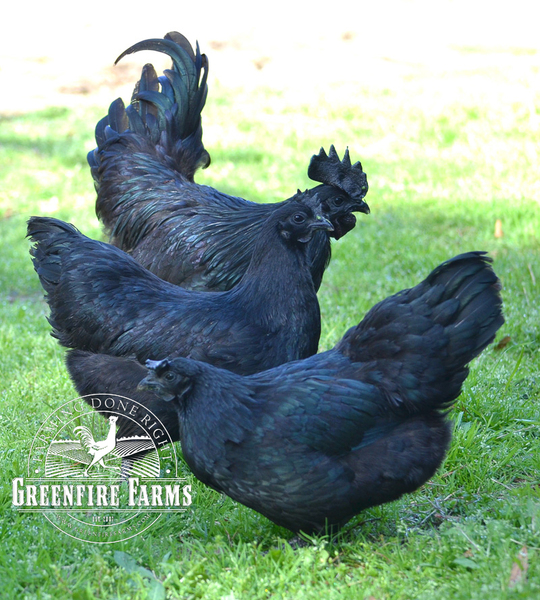


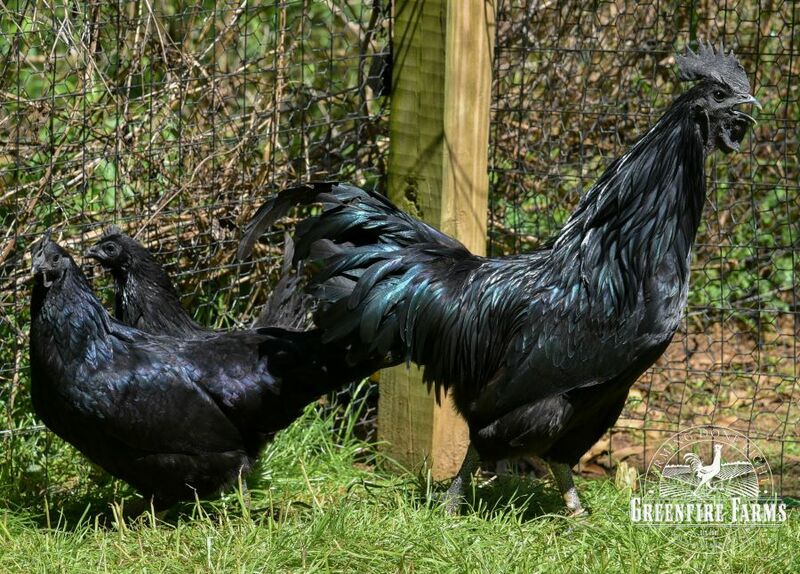
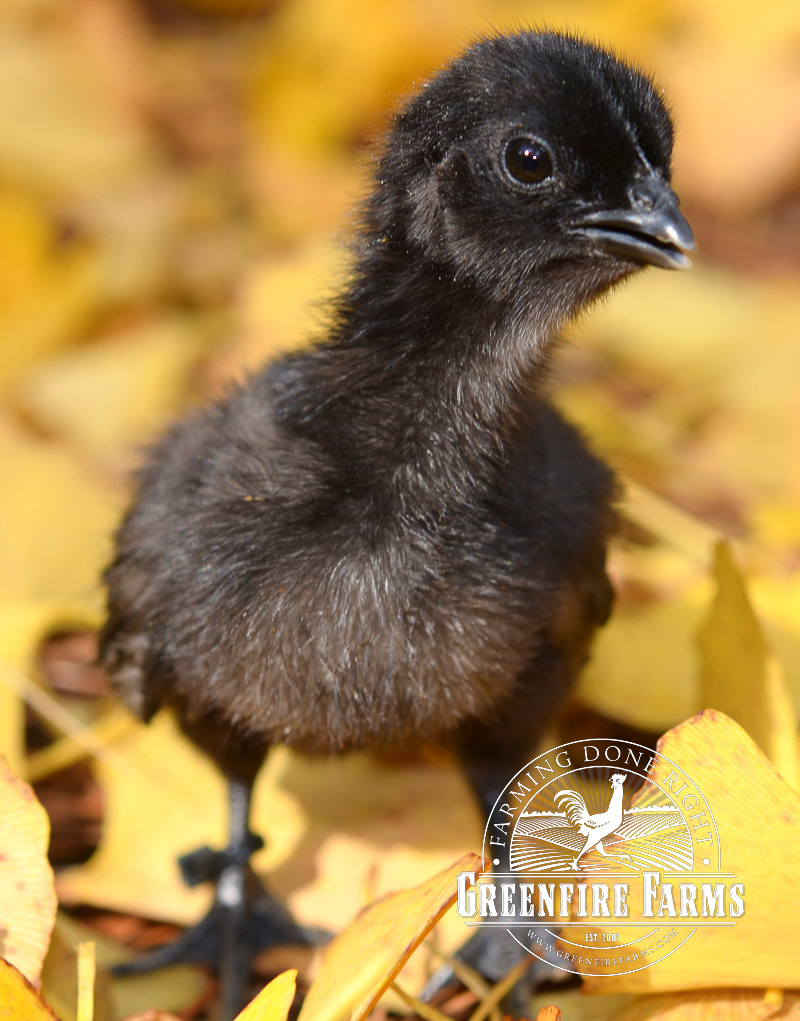
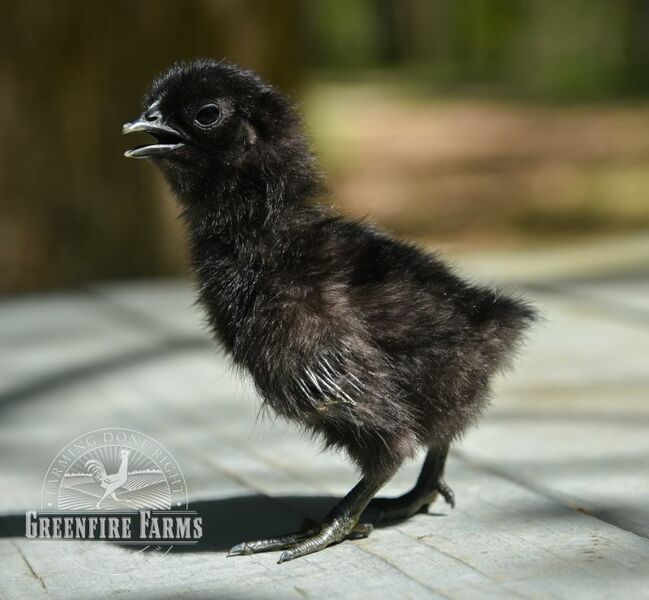
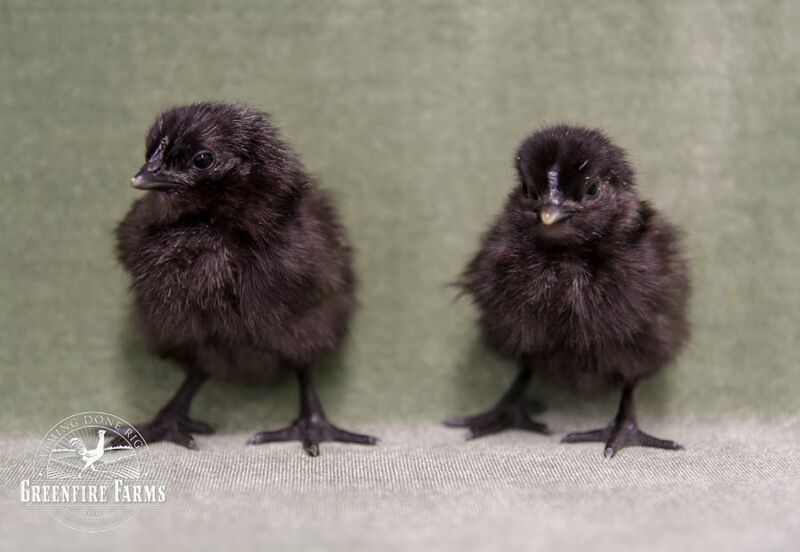
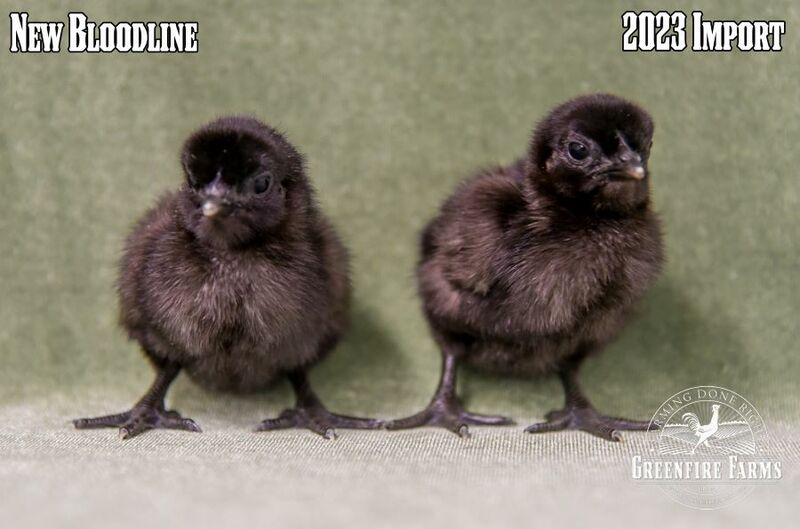
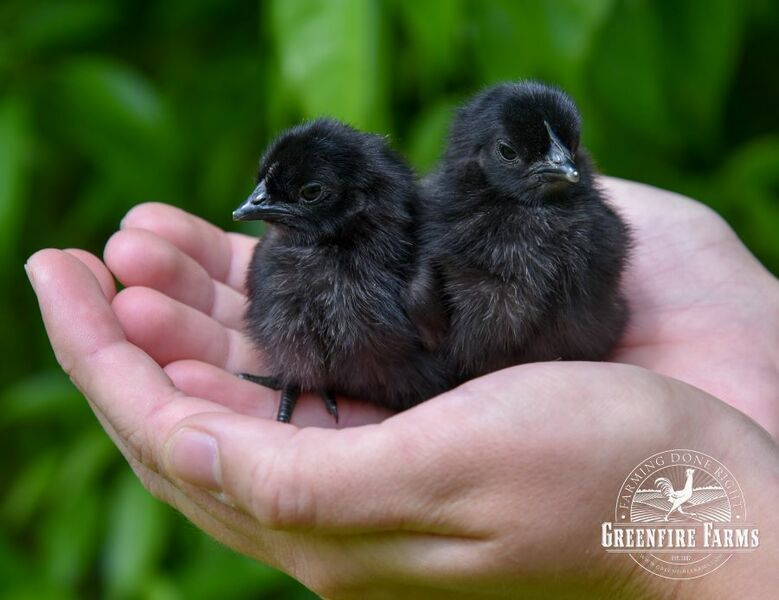
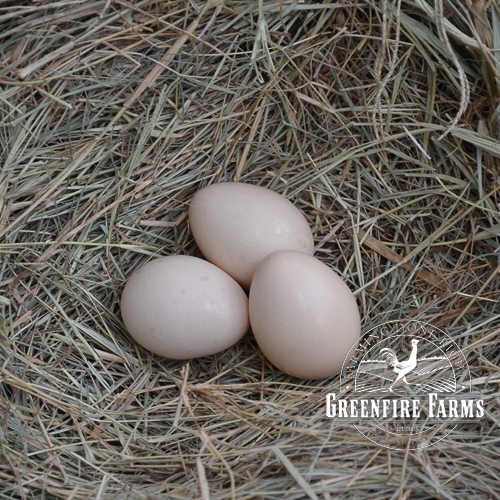


 Cart:
Cart: 

